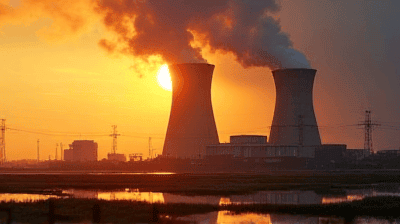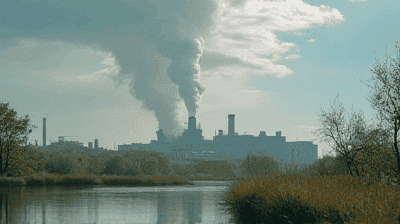The Impact of Methane Emissions on Global Warming & How to Reduce Them
Climate change presents one of the most significant challenges of our time, requiring urgent action from individuals, communities, and governments around the globe. While carbon dioxide (CO2) has often garnered the most attention as a greenhouse gas, methane (CH4) is a much more potent contributor to global warming over the short term. With a global warming potential over 25 times greater than CO2 over a century, understanding methane emissions and their impacts is crucial for effective climate change mitigation.
Understanding Methane Emissions
What is Methane?
Methane is a colorless, odorless gas produced through both natural processes and human activities. As a primary component of natural gas, methane is a significant energy source, but it also poses major environmental challenges when released into the atmosphere without being burned.
Sources of Methane Emissions
Methane is emitted from a variety of sources, both anthropogenic (human-induced) and natural:
Agricultural Activities:
- Livestock Production: Ruminant animals such as cows and sheep produce methane during digestion through a process called enteric fermentation. This accounts for a significant portion of agricultural methane emissions.
- Manure Management: The decomposition of animal waste, especially in anaerobic conditions, produces methane.
Fossil Fuel Production and Use:
- Natural Gas Extraction: Methane can escape during the extraction, processing, and transport of natural gas, often referred to as fugitive emissions.
- Coal Mining: Methane is released during the mining process as well as from abandoned coal mines.
Landfills:
- Organic waste decomposing in landfills produces methane in the absence of oxygen. This anaerobic decomposition leads to significant emissions if not properly managed.
Wetlands:
- Natural wetlands are a significant source of methane production through microbial processes that occur in waterlogged soils.
Wastewater Treatment:
- The treatment of sewage and other organic waste can produce methane, especially in anaerobic treatment facilities.
The Scale of Methane Emissions
Globally, methane emissions contribute significantly to the greenhouse gas effect. According to the U.S. Environmental Protection Agency (EPA), methane accounted for approximately 10% of total greenhouse gas emissions in the United States in recent years, while the Intergovernmental Panel on Climate Change (IPCC) reports that methane emissions are responsible for about 25% of the warming we are currently experiencing.
The Impact of Methane on Global Warming
The Greenhouse Effect
Methane's potency as a greenhouse gas primarily arises from its ability to absorb heat in the atmosphere. While methane does not remain in the atmosphere as long as CO2—the average atmospheric lifetime of methane is about 12 years—its short-term effects are much more pronounced. Over a 20-year period, methane is estimated to have a global warming potential that is approximately 84 to 87 times that of CO2.
Short-Term Climate Impacts
The immediate impacts of methane emissions manifest in several ways:
Increased Temperature: Methane contributes to the acceleration of temperature rise, leading to more intense heat waves, changing precipitation patterns, and extreme weather conditions.
Feedback Loops: As temperatures rise, additional methane is released from natural sources, including wetlands and thawing permafrost, creating a feedback loop that exacerbates warming.
Air Quality Deterioration: Methane contributes to the formation of ground-level ozone, a harmful air pollutant that affects human health and ecosystems.
Long-Term Climate Consequences
The long-term consequences of unchecked methane emissions are dire:
Ecosystem Disruption: Increased greenhouse gas concentrations can disrupt ecosystems and threaten biodiversity, altering habitats and species distribution.
Impact on Human Health: Climate change fueled by methane emissions can lead to health risks associated with heatwaves, respiratory issues, and waterborne diseases.
Economic Costs: The economic implications of climate change, driven in part by methane, include increased costs from natural disasters, healthcare, and damage to infrastructure.
Strategies to Reduce Methane Emissions
To effectively combat climate change, it is crucial to implement strategies that focus on reducing methane emissions across the various sectors that contribute to its release. Here are some actionable strategies for reducing methane emissions:
1. Agriculture and Livestock Management
Improving Livestock Feed and Nutrition
- Incorporating Additives: The addition of feed additives, such as seaweed, tannins, or other compounds, can reduce the amount of methane produced during digestion.
- Optimized Diets: Providing livestock with balanced diets tailored to their nutritional needs can improve overall health and reduce methane emissions from enteric fermentation.
Manure Management Practices
- Anaerobic Digestion: Implementing anaerobic digestion systems captures methane from manure and converts it into biogas, which can be used as an energy source while reducing emissions.
- Composting: Properly composting manure can help minimize methane emissions by enhancing aerobic decomposition.
2. Fossil Fuel Production and Use
Reducing Fugitive Emissions
- Leak Detection and Repair (LDAR): Implementing regular inspections for leaks during oil and gas extraction, processing, and transport can significantly reduce methane emissions.
- Upgrading Infrastructure: Investing in modern infrastructure, such as low-emission technologies and better pipeline materials, can prevent leaks from occurring.
Transitioning to Renewable Energy
- Phasing Out Coal: Transitioning from coal-fired power generation to cleaner energy sources like solar, wind, and geothermal can significantly lower methane emissions associated with fossil fuel use.
- Natural Gas as a Bridge Fuel: While natural gas is still a fossil fuel, its emissions are lower than coal. By ensuring that natural gas systems are efficient and minimize leaks, it can serve as a transitional energy source.
3. Landfill Management
Improved Waste Management Practices
- Enhanced Landfill Gas Capture: Installing gas collection systems in landfills can capture methane emissions before they reach the atmosphere. Collected methane can be flared or utilized for energy generation.
- Organic Waste Diversion: Promoting composting and recycling initiatives can reduce the amount of organic waste sent to landfills, subsequently decreasing methane emissions.
4. Wastewater Treatment Improvements
Advanced Treatment Technologies
- Aerobic Treatment Systems: Upgrading wastewater treatment facilities to aerobic systems can help minimize methane production compared to anaerobic processes.
- Biogas Recovery: Capturing biogas from wastewater treatment can be used as an energy source, turning waste into a resource and reducing emissions.
5. Policy and Regulatory Measures
Implementing Regulations
- Strengthening Emission Standards: Governments can create stricter regulations that limit methane emissions from agriculture, landfills, and fossil fuel operations.
- Incentives for Best Practices: Providing financial incentives for farmers, industries, and municipalities that adopt methane-reducing technologies and practices can encourage widespread adoption.
International Cooperation
- Global Methane Pledge: Countries can work together to set and achieve ambitious methane reduction targets. International collaboration is essential for sharing best practices and technologies.
- Funding and Support: Developed countries can provide technical and financial assistance to developing nations, helping them implement effective methane reduction strategies.
6. Public Awareness and Education
Raising Awareness of Methane Emissions
- Community Engagement: Educating communities about the sources and impacts of methane emissions can motivate individuals to support sustainable practices and pressure companies and governments for change.
- Sustainable Consumption: Encouraging consumers to understand their dietary choices—particularly regarding meat and dairy consumption—can reduce emissions related to livestock production.
7. Technological Innovations
Investing in Research and Development
- Emerging Technologies: Continued investment into innovative technologies for methane reduction, such as advanced monitoring techniques, methane converters, and alternative feed sources, can yield significant emissions reductions.
- Carbon Utilization: Research into technologies that utilize captured methane for energy or chemical production can create economic opportunities while reducing emissions.
Conclusion
Methane emissions play a critical role in exacerbating global warming, making it essential to address this potent greenhouse gas as part of climate change mitigation strategies. The sources of methane emissions—ranging from agriculture and fossil fuel production to landfills and wastewater treatment—provide multiple avenues for intervention.
Through the implementation of effective reduction strategies, including improved agricultural practices, regulatory measures, technological innovations, and public awareness campaigns, it is possible to significantly mitigate methane emissions. For a sustainable future, concerted global effort across various sectors will be vital in combating climate change and protecting the planet for generations to come.


